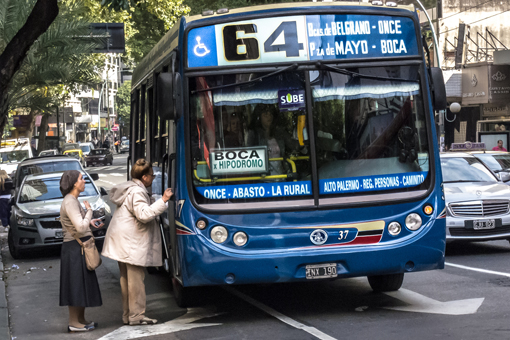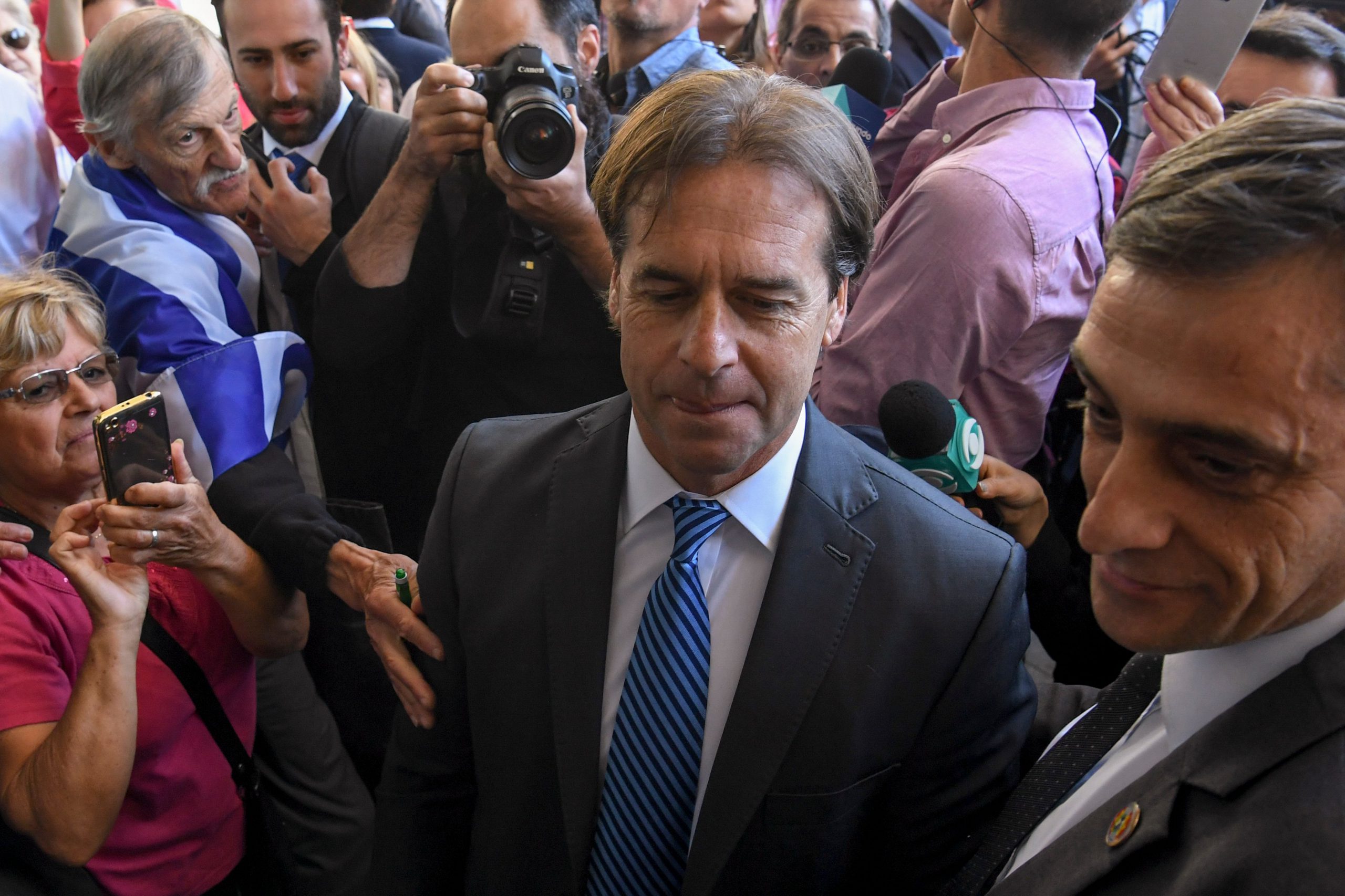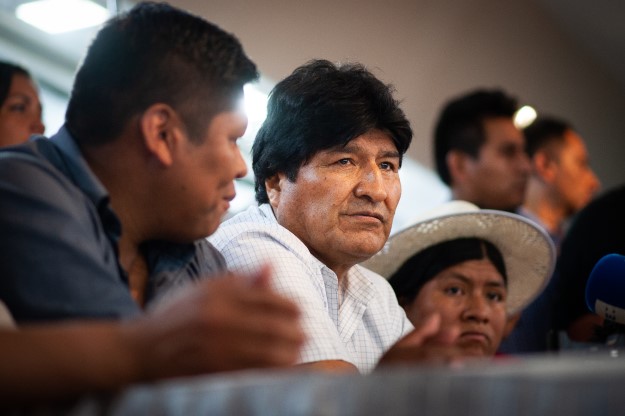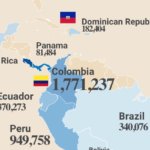There’s more than a year to go until Argentina’s October 2015 presidential elections, but campaign season unofficially kicked off last October when the headquarters of National Deputy Sergio Massa (Frente Renovador, or Renewing Front party) and current Buenos Aires Mayor Mauricio Macri (Propuesta Republicana, or Republican Proposal party—PRO) erupted in joy upon hearing the results of the 2013 legislative elections.
Massa—Argentine President Cristina Fernández de Kirchner’s former ally and chief of staff—split the votes of the Peronist party and received nearly four million votes, or 44 percent of the vote (becoming one of the most-voted candidates), to secure his seat in the Chamber of Deputies on October 27. He handily beat his opponent from the traditional Peronist-affiliated party, Frente Para La Victoria (Front for Victory—FPV) catapulting himself into the spotlight as a presidential contender. Meanwhile, Macri’s PRO won 16 new seats in the legislature. Amid a festive scene that resembled a political convention in the U.S., Macri launched his candidacy for president the same night.
Meanwhile, in the bunker of the ruling FPV coalition, President Fernández de Kirchner commemorated three years since the death of her husband, former President Néstor Kirchner, and celebrated her party’s continued reign as what she called “the strongest national political force” in Argentina. Today, the president has a number of potential successors—but Daniel Scioli, the current governor of Buenos Aires province, is the most likely candidate, according to the polls.
The Frente Amplio (Broad Front—UNEN Coalition) candidate for 2015 will be announced after the party’s primaries on August 9, 2015, when political heavyweights such as Congresswoman Elisa Carrio, former Vice President Julio Cobos, and former Minister of the Economy Martín Lousteau will compete.
Next year’s election could lead to the first presidential runoff since they were established in the Argentine Constitution in 1994. The Peronist vote will go to either Scioli or Massa, while UNEN and PRO have flirted with the idea of creating an alliance to end the 12-year period of Kirchner and Fernández de Kirchner’s government—which many economists blame for the Argentine economy’s decline.
Although macroeconomics are not hugely important for average citizens, issues like poverty, inflation and exchange rates “will be put on the public agenda by the candidates,” says Diego Coatz, chief economist at the Unión Industrial Argentina (Argentine Industrial Union—UIA).
Economic representatives of Argentina’s main political forces—minus those from the FPV, who declined to comment for this article—agreed to discuss five ways the next administration should address the economy.
1. Reduce inflation.
Among the countries analyzed in the April 2014 International Monetary Fund World Economic Outlook, only 10 had inflation rates higher than 10 percent in 2013—including Argentina and Venezuela in Latin America.
According to the Fundación de Investigaciones Económicas (Economic Research Foundation—FIEL), Argentina’s inflation rate rose 2.28 percent during the month of May, due to the government’s devaluation of the peso in January and a drop in consumption. Yet various consulting firms estimate that annual inflation in 2014 will reach 28 percent. While the actual measurement has been controversial, many citizens nevertheless feel the decline of purchasing power and buy black market dollars.
“Inflation is not reduced through a recession or monetary tightening, but through inflation targets agreed upon with the private sector,” said Javier González Fraga, former president of the Central Bank of Argentina and an economist from the Unión Cívica Radical (Radical Civic Union—UCR)-Frente Amplio UNEN alliance. “It may take four years to bring [inflation] down to 4 percent, but on the basis of a solid fiscal policy.”
Marco Lavagna, son of former Economy Minister Roberto Lavagna and head of Massa’s economic team, said that the Fernández de Kirchner government’s devaluation of the peso is just a temporary fix for a larger problem.
“The peso was devalued without a sustainable program that looks at fiscal, monetary and exchange rate policies as a whole. The government had been doing these fixes to get to 2015—first with the unsuccessful policy of ‘Precios Cuidados’ (freezing the price of specific goods), then asking the Central Bank to print lots of money and increasing interest rates,” said Lavagna. “It is important that the Central Bank has an independent president and protects the Argentine peso’s value” he said.
2. Provide clear statistics.
Due to the controversy surrounding statistics from Argentina’s Instituto Nacional de Estadística y Censos (National Institute of Statistics—INDEC) to measure indices like inflation, poverty, growth or unemployment, the future of this office will be a huge challenge for the next president. In January 2007, former President Néstor Kirchner’s office fired at least 22 employees responsible for INDEC’s consumer price index. Since then, there has been a growing gap between Argentina’s official and unofficial consumer prices, and the opposition argues that the official statistics on inflation and other economic indicators are no longer reliable.
“Our deputies have submitted a bill for the consolidation of public statistics—which shouldn’t be subject to party manipulation, but instead managed by an autonomous institute that makes them available to people and researchers,” says Michael Braun, CEO of Fundación Pensar and ideological center of the PRO party, which led Macri’s campaign just a few blocks from the Casa Rosada.
The dilemma is whether the new president should review the numbers retroactively, or start with a clean slate.
“Rates must recalculate retroactively. There are treasuries paid with fake indices, and if some people have been scammed and can prove it, the state has to face the trials and the political and economic cost,” said González Fraga.
For economist Coatz of the UIA, it is difficult to correct old statistics, because many distortions can be generated. However, Coatz said that it is important to understand that the numbers “should be recollected and issued by the government [rather than an independent organization], because it is a very high-cost task.”
3. Stabilize the exchange rate.
“Blue,” “green,” “pale blue,” “gray,” “stock,” “tourist,” “savings” and “official” have all become familiar terms to refer to the dollar in Argentina. This is one of the consequences of the currency exchange controls installed in 2011, which some analysts believe should be stopped in order to stabilize the foreign exchange policy.
“The government partially relaxed the restriction, allowing citizens to acquire dollars for savings—which made the gap between the official and parallel dollar drop. These measures will continue until the end of [Fernández de] Kirchner’s government, although the cost will be to slow the economy,” said analyst Federico Barani, an economist from the Instituto Tecnológico de Buenos Aires.
The PRO party argues that if the government continues to print money to finance the fiscal deficit, the exchange rate will continue rising. “The rate is not going to be low, for sure,” said Braun of the PRO. “The current market consensus talks about an official exchange rate closer to 9.5 [pesos per dollar] by year-end.”
According to the Argentine futures market Rofex, the official dollar will close at 9.29 pesos by the end of the year. Currently, the official rate is about eight pesos, while the parallel dollar about 12 pesos.
The clearest risk for devaluation is if unions demand wage increases and if more strikes occur, as they did in April. Salary negotiations in August will be another test for the government.
4. Return to the international market.
The recent agreement Argentina reached with the Paris Club of creditor nations to resume repayment of its $9.7 billion debt seems to be the first step in its return to international credit markets. Even some in the opposition recognized Economy Minister Axel Kicillof’s success in this matter. However, the U.S. Supreme Court’s rejection of Argentina’s appeal in its battle with holdout hedge funds will force the country to pay at least $1.3 billion. The Argentine government is currently negotiating a settlement with holdout creditors in New York.
“If the government manages to get funding to face debt maturities next year (which reach $10 billion), it means bringing dollars into the country, and the chances of [winning for] Scioli or any kirchnerismo candidate will increase,” said Coatz of the UIA. “Otherwise, the option is to raise the rates, freezing pensions and curbing public investments—unpopular measures for the citizens”.
The next president will receive a robust economy, thanks to promising midterm investments: $15 billion for the Vaca Muerta oil field and an estimated $3.86 billion for mining projects in 2014. This scenario has turned Argentina into an attractive market for major European and U.S. multinationals, according to the latest Frontier Markets Sentiment Index.
However, the UNEN’s González Fraga recalled that in recent years, Argentina hasn’t signed any free trade agreements and instead “got stuck in Mercosur—an obstacle to integrate with Pacific countries. We must critically analyze the regional market and integrate with the world in a smarter way,” he said.
According to Marco Lavagna, another topic to address is energy policy. “In the past two years, Argentina has lost 40 percent of its Central Bank reserves due to imports of oil and gas,” he said.
“The political parties began to adhere to the 14 strategic points agreement for the future of energy policy, which has a long-term vision of 25 years,” Lavagna said, referring to a 14-point energy agreement signed so far by Sergio Massa from the Frente Renovador last May and Ernesto Sanz from the UCR in June. “The country has to give a signal of trust for the investment flows.”
5. Provide targeted subsidies.
The La Asignación Universal por Hijo (Universal Child Allowance—AUH) is a conditional cash transfer program implemented by the Fernández de Kirchner government to encourage low-income Argentine families to send their children to school. All presidential candidates have promised to maintain the program if they win the presidency.
Broadening subsidies for the population under 18—and pensions for those over 65—are policies that all presidential candidates appear to support. Nevertheless, opposition parties criticize the extended policy of subsidies for basic services that President Néstor Kirchner began in 2003 to promote consumption after the 2001 crisis. “It has ended up benefiting the wealthy, who pay monthly electricity and gas bills of less than $10 and $5 per month, respectively,” analyst Federico Barani argued.
“The 30 percent of [Argentines] living below the poverty line are the ones who should pay minimum rates for public services,” said Braun of the PRO. “The same policy should apply to taxes: more taxes on assets, and less on medium-sized businesses. To fight poverty, we need to promote investments and to develop agro-industries,” he concluded.
There are many challenges for Argentina’s next president. Whoever succeeds Fernández de Kirchner in 2015 will have a chance to enact the changes outlined above and strengthen the Argentine economy.









